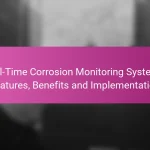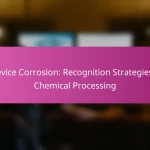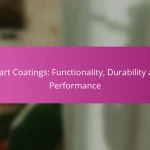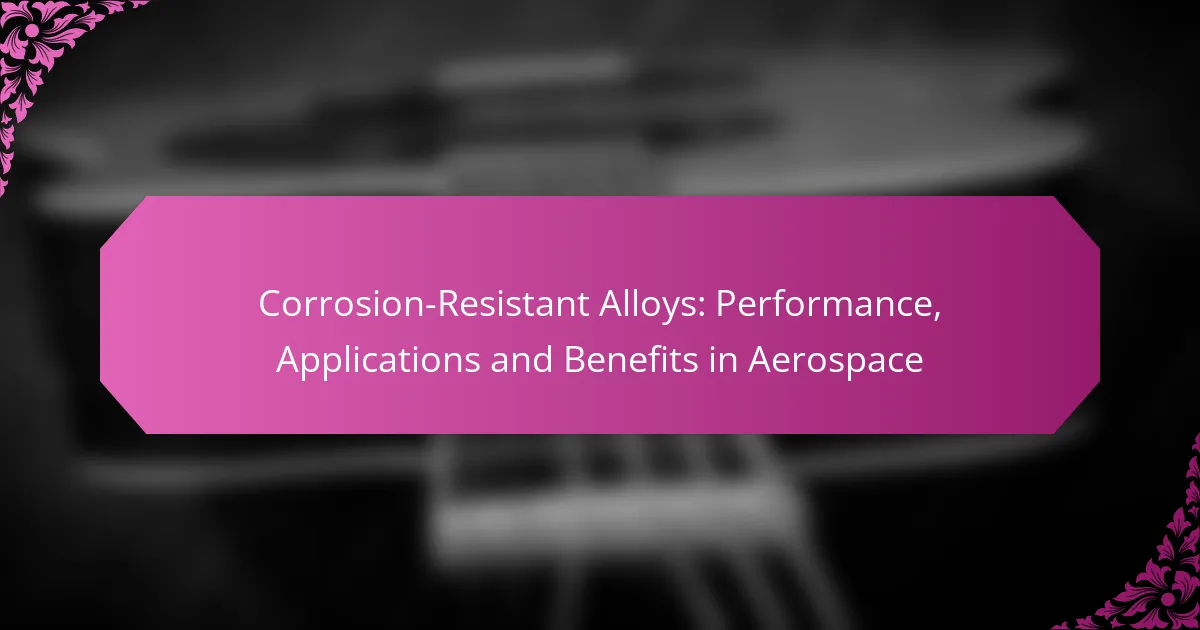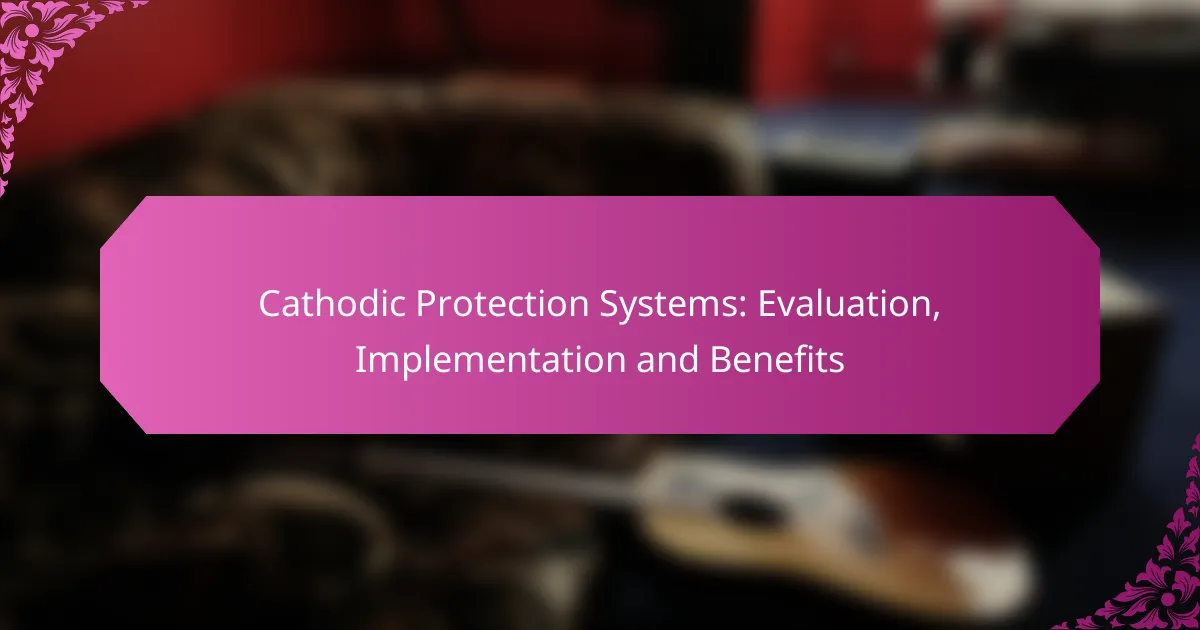When it comes to protecting metals from corrosion, anodizing and galvanizing are two popular methods, each with its own set of advantages. Anodizing is favored for its superior corrosion resistance and aesthetic appeal, particularly in aluminum applications, while galvanizing is often chosen for its cost-effectiveness and durability in protecting steel and iron. Understanding the specific needs of your project will help determine which method is the most suitable for your requirements.
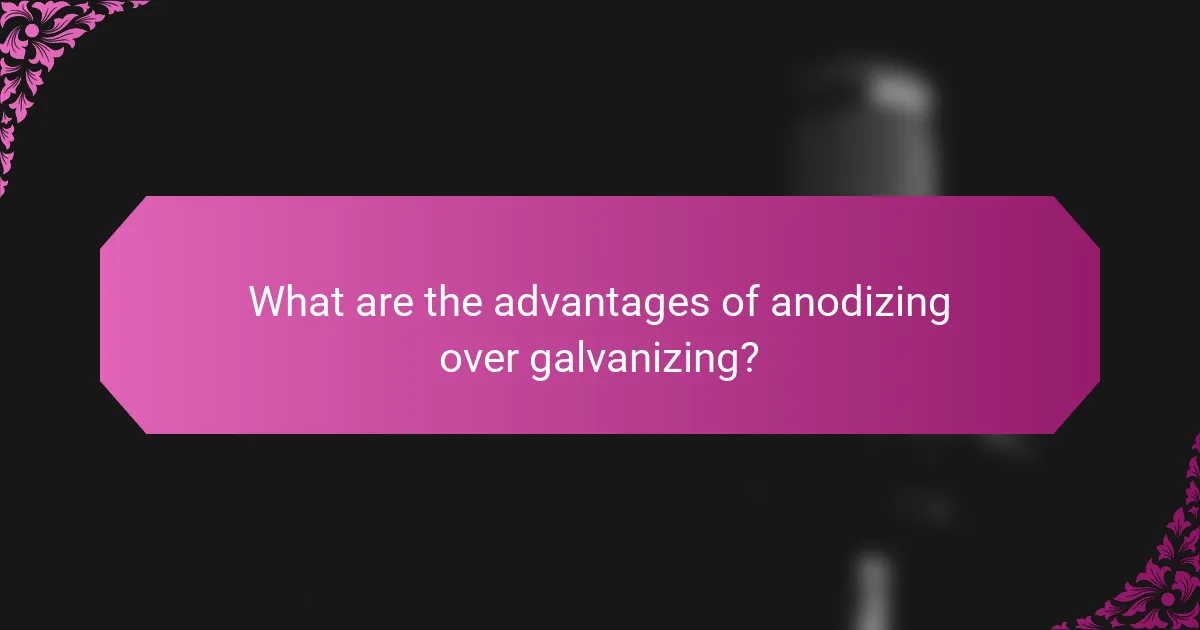
What are the advantages of anodizing over galvanizing?
Anodizing offers several advantages over galvanizing, particularly in terms of corrosion resistance, aesthetics, weight, electrical insulation, and environmental impact. It is often preferred for applications where these factors are critical, such as in the aerospace and automotive industries.
Corrosion resistance
Anodizing significantly enhances the corrosion resistance of aluminum by creating a thick oxide layer that protects the metal beneath. This layer is much harder and more durable than the zinc coating used in galvanizing, making anodized surfaces less prone to wear and tear in harsh environments.
In many cases, anodized aluminum can withstand exposure to moisture, chemicals, and UV light better than galvanized surfaces, which can corrode over time, especially in saltwater conditions.
Aesthetic finish
Anodizing provides a superior aesthetic finish compared to galvanizing. The anodized surface can be dyed in various colors, allowing for customization that enhances the visual appeal of products. This is particularly beneficial in consumer-facing applications where appearance matters.
Galvanizing typically results in a dull, metallic finish that may not be suitable for decorative purposes. Anodized surfaces maintain their color and finish over time, making them ideal for architectural elements and consumer goods.
Weight reduction
Anodizing is a lightweight option compared to galvanizing, which adds a layer of zinc that can increase the overall weight of the metal. This is crucial in industries like aerospace, where minimizing weight is essential for performance and fuel efficiency.
By using anodized aluminum, manufacturers can achieve the necessary strength and durability without the added weight, making it a preferred choice for components in vehicles and aircraft.
Electrical insulation
Anodized surfaces provide excellent electrical insulation, which is a significant advantage in applications where electrical conductivity must be minimized. The anodized layer acts as a barrier, preventing electrical currents from passing through the aluminum.
This property is particularly useful in electronic components and electrical housings, where preventing short circuits is critical. In contrast, galvanized surfaces do not offer the same level of insulation, which can be a drawback in such applications.
Environmental impact
Anodizing is generally considered more environmentally friendly than galvanizing. The anodizing process uses non-toxic chemicals and produces less waste, making it a more sustainable choice for manufacturers.
Additionally, anodized aluminum is fully recyclable, which contributes to a circular economy. In contrast, the galvanizing process can involve hazardous materials and generate more environmental pollutants, raising concerns about its long-term impact.

When should you choose anodizing instead of galvanizing?
Anodizing is often preferred over galvanizing when corrosion resistance and aesthetic appeal are priorities, especially for aluminum components. This process enhances surface durability and allows for color customization, making it suitable for various applications.
Application in aerospace
Anodizing is widely used in the aerospace industry due to its lightweight and corrosion-resistant properties. Aircraft components made from aluminum benefit from anodizing, which provides a protective layer that withstands harsh environmental conditions.
Moreover, anodized surfaces can be dyed to meet specific design requirements, allowing for both functionality and visual appeal in aerospace applications. This is crucial for maintaining the structural integrity and safety of aircraft.
Use in architectural elements
In architecture, anodizing is favored for aluminum facades and structural elements because it offers both aesthetic versatility and long-lasting protection. The anodized finish can be produced in various colors and textures, enhancing the building’s design while providing resistance to weathering and UV exposure.
Additionally, anodized surfaces are easy to clean and maintain, making them ideal for high-traffic areas. This durability helps reduce long-term maintenance costs, a significant consideration in architectural projects.
Preference for lightweight components
Anodizing is particularly advantageous for lightweight components where weight reduction is essential, such as in automotive and sporting goods. The process adds minimal weight while significantly improving corrosion resistance compared to galvanizing.
For instance, bicycle frames and high-performance automotive parts often utilize anodized aluminum to achieve a balance between strength and weight. This makes anodizing a preferred choice for manufacturers focused on performance and efficiency.
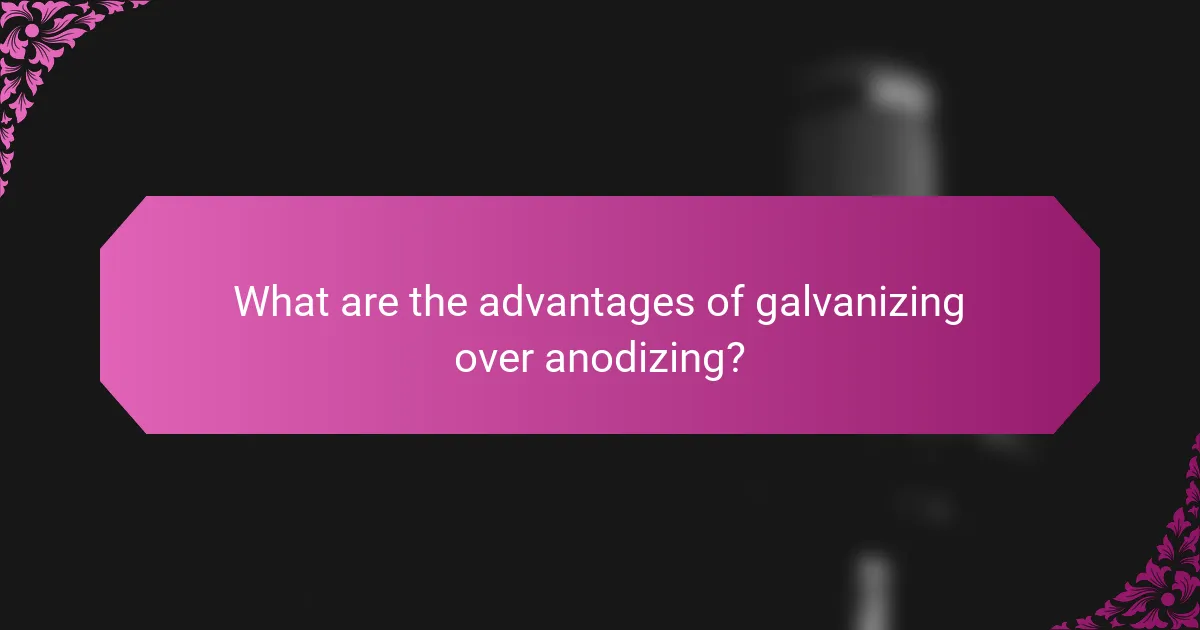
What are the advantages of galvanizing over anodizing?
Galvanizing offers several advantages over anodizing, particularly in terms of cost, durability, and application ease. It is often the preferred choice for protecting steel and iron from corrosion, especially in outdoor or industrial settings.
Cost-effectiveness
Galvanizing is generally more cost-effective than anodizing, especially for large-scale projects. The process of hot-dip galvanizing can be less expensive due to lower material costs and reduced labor requirements. For example, galvanizing can be significantly cheaper per square meter compared to anodizing, making it ideal for budget-conscious applications.
Additionally, the longevity of galvanized coatings can lead to lower maintenance costs over time, further enhancing its cost-effectiveness. This is particularly relevant for projects where long-term durability is essential.
Durability in harsh environments
Galvanizing provides superior protection against corrosion in harsh environments, such as coastal areas or industrial settings. The zinc coating forms a robust barrier that withstands moisture, chemicals, and extreme temperatures. This makes galvanized steel suitable for outdoor applications, including bridges, fences, and utility poles.
In contrast, anodizing is more suited for aluminum and may not offer the same level of protection against physical damage or severe weather conditions. Therefore, for projects exposed to harsh elements, galvanizing is often the better choice.
Ease of application
The application of galvanizing is generally simpler and faster than anodizing. Hot-dip galvanizing involves immersing the metal in molten zinc, which creates a uniform coating without the need for complex surface preparation. This process can be completed in a matter of hours, making it efficient for large batches.
Anodizing, on the other hand, requires more intricate steps, including surface cleaning and electrochemical processes, which can extend the application time. For projects requiring quick turnaround times, galvanizing is often the preferred method.
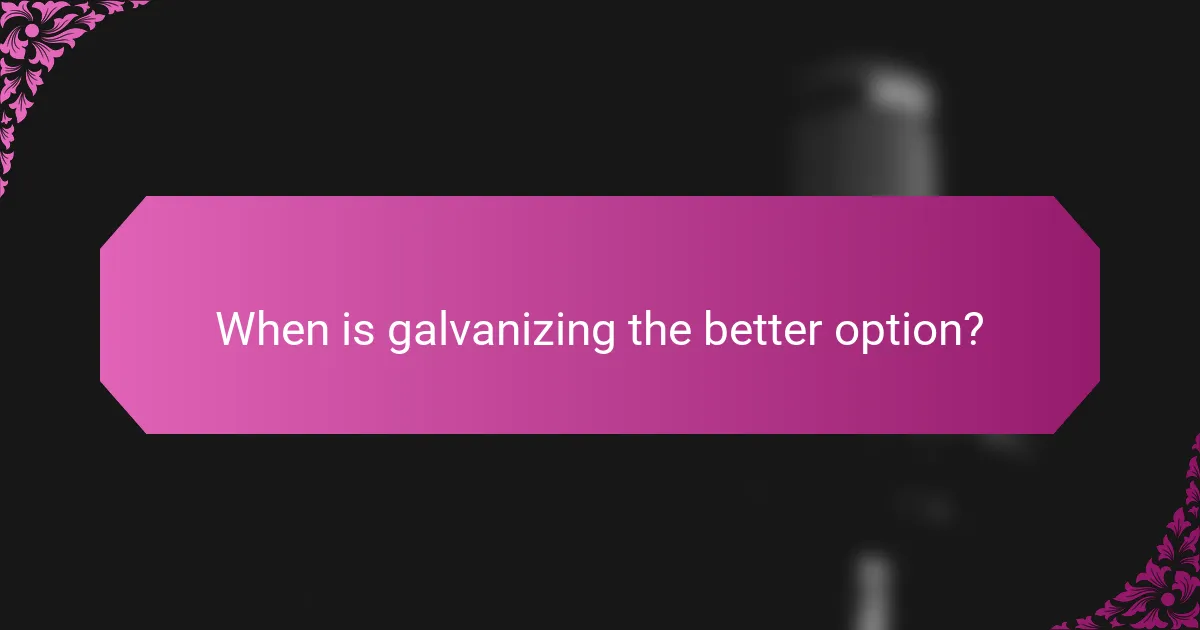
When is galvanizing the better option?
Galvanizing is often the preferred choice when durability and corrosion resistance are critical, especially in harsh environments. It involves coating steel with zinc to protect it from rust, making it suitable for various applications.
Heavy-duty industrial applications
In heavy-duty industrial settings, galvanizing provides a robust protective layer that withstands mechanical wear and tear. Industries such as construction, mining, and manufacturing benefit from galvanized steel, which can endure significant stress and exposure to harsh chemicals.
For example, equipment and machinery parts that are regularly exposed to abrasive materials or heavy loads should be galvanized to extend their lifespan. This process can reduce maintenance costs and downtime significantly.
Infrastructure projects
Galvanizing is ideal for infrastructure projects like bridges, railways, and pipelines, where long-term durability is essential. The zinc coating prevents rust and degradation, ensuring structural integrity over many years.
Regulatory standards often require galvanized materials in public infrastructure to enhance safety and longevity. For instance, in the European Union, galvanized steel is commonly used in construction to meet durability regulations.
Long-term outdoor exposure
For materials exposed to outdoor elements, galvanizing offers superior protection against moisture and environmental factors. This is particularly important in coastal areas or regions with high humidity, where unprotected steel would corrode rapidly.
When choosing materials for outdoor applications, consider galvanizing for items like fences, outdoor furniture, and utility poles. The lifespan of galvanized products can often exceed 30 years with minimal maintenance, making them a cost-effective solution in the long run.
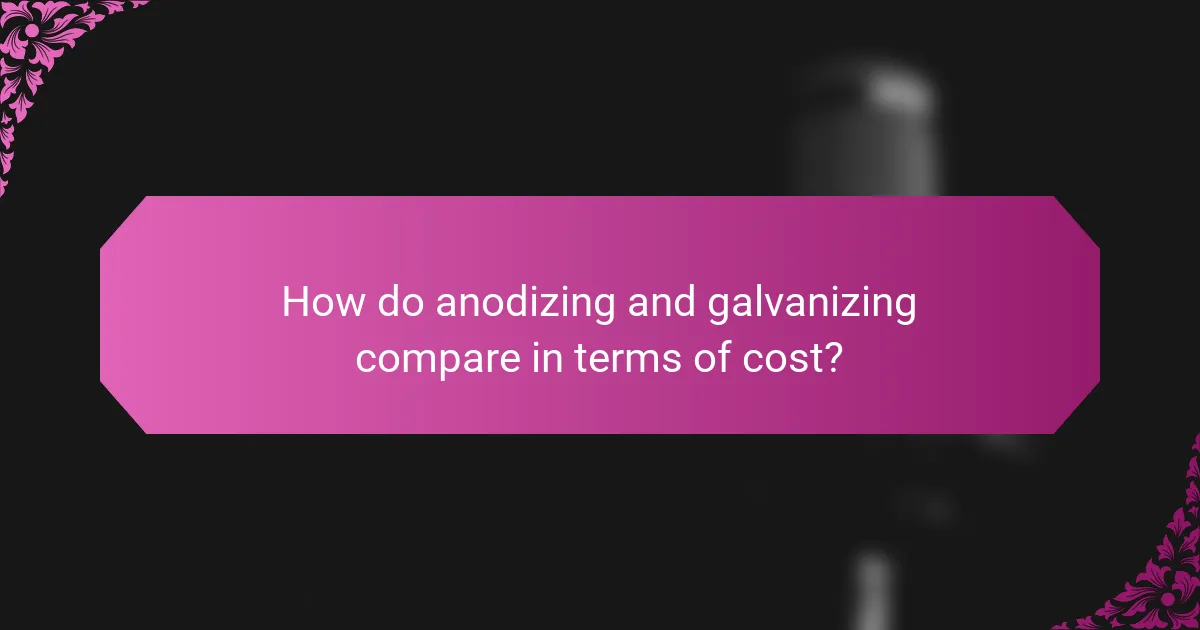
How do anodizing and galvanizing compare in terms of cost?
Anodizing and galvanizing differ significantly in cost, influenced by factors such as materials, processes, and application needs. Anodizing typically has a higher initial cost due to its more complex process, while galvanizing may offer lower upfront expenses but can incur higher maintenance costs over time.
Initial investment differences
The initial investment for anodizing is generally higher, often ranging from 20% to 50% more than galvanizing. This is due to the specialized equipment and chemicals required for anodizing, which enhance the durability and aesthetic appeal of aluminum surfaces. In contrast, galvanizing involves a simpler process of coating steel with zinc, making it a more cost-effective option for many projects.
When considering initial costs, it’s crucial to evaluate the specific requirements of your project. For large-scale applications, the lower cost of galvanizing may be attractive, but if aesthetics and corrosion resistance are priorities, anodizing might justify the higher expense.
Long-term maintenance costs
Long-term maintenance costs can vary significantly between anodized and galvanized surfaces. Anodized finishes typically require less maintenance due to their enhanced resistance to corrosion and wear, leading to lower overall costs over time. In many cases, anodized surfaces can last for decades without significant deterioration.
On the other hand, galvanized surfaces may need periodic inspections and touch-ups, especially in harsh environments. While the initial cost is lower, the potential for increased maintenance can add up, making it essential to consider the long-term implications when choosing between the two methods.

What factors influence the choice between anodizing and galvanizing?
The choice between anodizing and galvanizing depends on several factors, including the type of metal, the intended application, and environmental conditions. Anodizing is typically used for aluminum, while galvanizing is preferred for steel due to its protective qualities against corrosion.
Material Compatibility
Material compatibility is crucial in deciding between anodizing and galvanizing. Anodizing is specifically designed for aluminum and its alloys, enhancing corrosion resistance and surface hardness. In contrast, galvanizing is primarily used for steel, where a zinc coating provides a robust barrier against rust.
Corrosion Resistance
Corrosion resistance varies significantly between anodizing and galvanizing. Anodized aluminum can withstand harsh environments, making it suitable for outdoor applications. Galvanized steel, while effective against rust, may not perform as well in highly acidic or alkaline conditions, leading to potential failures over time.
Aesthetic Considerations
Aesthetics play a role in the choice between anodizing and galvanizing. Anodizing allows for a variety of colors and finishes, making it ideal for architectural applications where appearance matters. Galvanizing, while functional, typically has a more industrial look and is less customizable in terms of color.
Cost and Maintenance
Cost and maintenance are important factors to consider. Anodizing can be more expensive upfront but requires less maintenance over time due to its durability. Galvanizing is generally more cost-effective initially but may necessitate more frequent maintenance in corrosive environments, potentially increasing long-term costs.
